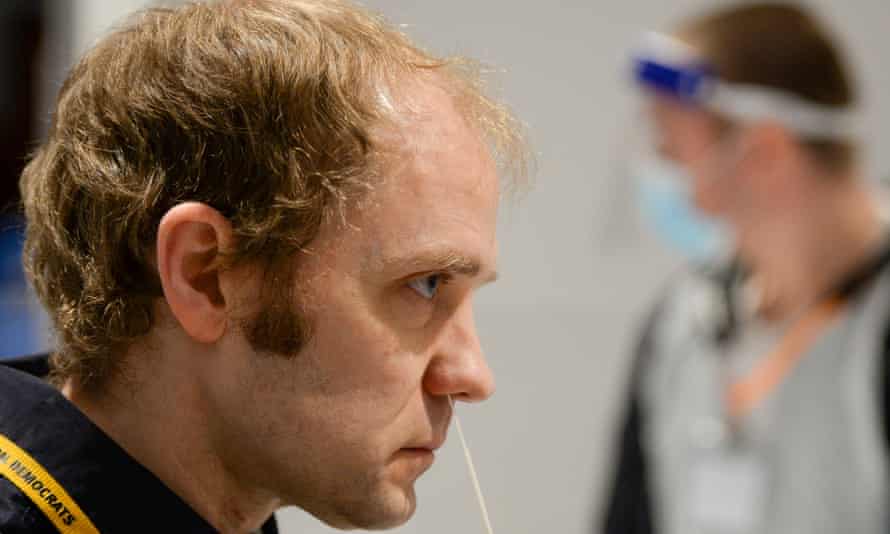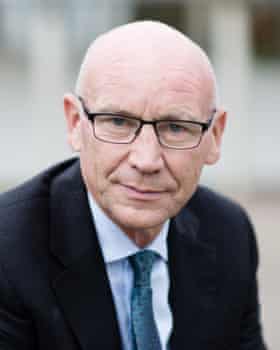Plans for all children in England to be back at school on March 8 are “madness” and risk prolonging the “damaging cycle of stop-start schooling”, head teachers and unions have warned.
The prime minister’s “big bang” return for all school children on a single day was unveiled hours after new data revealed that teachers are at greater risk of testing positive for Covid than most other occupations, contrary to frequent assurances from government.
Teaching unions were alarmed by the publication of documents by Sage, the government’s Scientific Advisory Group for Emergencies, warning that the opening of primary and secondary schools could increase R by up to 50% and calling for a phased reopening – possibly just primaries in the first instance – to assess the impact.
“It’s madness,” said Mary Bousted, joint general secretary of the National Education Union. “Whilst cases of Covid infection are falling, along with hospitalisation rates, it remains the case, unfortunately, that cases are three times higher now than when schools reopened last September. This fact alone should have induced caution.”
Headteachers and teaching unions have lobbied hard for a phased return, similar to the approach adopted by other UK nations, warning that a single start date for all years in primary and secondary school could trigger a fresh spike in infections as 10m staff and pupils head back to school.
Geoff Barton, general secretary of the Association of School and College Leaders, said Boris Johnson’s decision to press ahead with a full return on 8 March could prove counterproductive and lead to more disruption. “We fear that England’s less cautious approach runs the risk of increasing the rate of infection and prolonging the damaging cycle of stop-start schooling,” he said.
While unions welcomed tighter rules on mask wearing, which will now be recommended in secondary school classrooms where 2-metre social distancing cannot be maintained, rather than just in corridors and communal areas, they said it did not go far enough. Others raised concerns about government plans for mass testing in schools.
The testing of primary pupils has been ruled out for the time being, but in secondary schools and colleges, students will be expected to undergo three tests on site in the first two weeks following return, after which families will be supplied with kits for home testing twice a week.

Testing is not compulsory and will be based on trust. The lateral flow devices, which have been criticised by some experts because of concerns about accuracy, provide results in 30 minutes. Families can then read and upload the data to notify the school. Pupils who are positive will be required to self-isolate.
Jules White, head of Tanbridge House school in Horsham, West Sussex and leader of the Worth Less? campaigning group of school leaders, said the testing plans were “confused and unworkable”.
“Heads and families are being told that it’s ‘mandatory for all pupils to attend from March 8’, yet at the same time pupils can only go to ‘face-to-face lessons when they receive their first negative test result’.

“Logistically, the very best that can happen is that some year groups will not return to face-to-face lessons until the week beginning March 15. We then have to consider the effects of those children who refuse tests and after that then see if home testing is in any way reliable.”
Meanwhile, data published by the Office for National Statistics on Monday confirmed union fears that teachers have a higher probability of testing positive for Covid than most other occupations. Out of a list of 25 occupations, teaching and other education professionals come fourth, with a 4.39% probability of testing positive – more than twice the rate of the lowest group, a small sample of agricultural workers, for which the figure was 2.09%.
More detailed analysis suggests the Covid positivity rate among secondary school teachers is 5.4%, among primary teachers 5.2%, and among teaching assistants 6.6%. While far lower than paramedics (12.3%, based on a very small sample), their risk is higher than nurses at 4.8%.
Elsewhere there was support for the government’s plan. David Laws, executive chairman of the Education Policy Institute (EPI) thinktank, said: “It is very welcome that the government has recognised the importance of education and children’s wellbeing by prioritising the return of schools, placing them well ahead of other sectors and areas of the economy.”
Leora Cruddas, chief executive of the Confederation of School Trusts (CST), which represents 4,000 schools in England, said: “There is unlikely to be a perfect time or perfect evidence on which to base a decision to open schools fully, but the important thing is that schools are some of the best-controlled environments.”